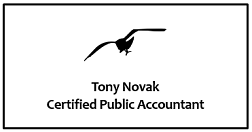I’ve now published 147 blog posts through the “Pulse” feature of LinkedIn over the past two years (September 1, 2014 to August 31, 2016) to promote my new accounting practice. This seems like a good time to pause take a look back at reader response. Sara Rosenberg, a business adviser, suggested a while ago that I focus on increasing the level of engagement per post but I really do not know how to do that. I thought that perhaps I could notice some pattern in the more popular posts that can be replicated. I tallied the “likes” to previous posts and went back to reread the posted comments to each of the articles. I excluded posts with less than 10 likes and posts that were specifically directed toward accountants or specific industry professionals. On average, a post receives about 3 likes from about 1,000 LinkedIn followers. These were the most popular posts:
Startling news about medical debt
This post had more likes than any other. I presume this is based solely on the number of people affected by the problem and the little press coverage this topic receives. 70 likes.
How to fix a broken small business health plan
I really don’t know what people liked about this article. It is dry and technical but with important timely information. Is it possible that readers actually recognize unique valuable content? I’m skeptical. In general, readers don’t like articles about how bad our health care crisis has become. 32 likes.
Tax preparers should be scared
A timely piece about stress in the tax preparation system. I don’t know if the “likes” were from professionals or the public. 24 likes
10 simple rules for financial survival
It has broad application; tends to lean into the category of what I call “fluff” or “feel good” content. Even though I personally dislike it, there is no doubt this stuff is popular on social media. 11 likes.
A dark day for U.S. Christianity
The most recent in this list; it drew the strongest praise but I had to remove some uncivil comments in the discussion from (ironically) Christian advocates who objected to the message. Most readers apparently understood this was a business article about employee benefit plans, not a social commentary. It is sad reminder that social media readers seem to have lost the ability to politely disagree. 10 likes.
While doing this exercise I discovered a number of other things:
- The number of new readers and likes on a LinkedIn post peaks about a week after publication. In contrast, my web site articles sometimes receive measurable long term readership years after publication.
- The number of readers is not highly correlated with the number of likes.
- The average number of readers of a LinkedIn post is slightly less than the number who view a post like this one on my own web site. That number of viewers on my own web site is currently around 50 per post, down from about 500 before 2010. Advisers explain this as a function of a more crowded online world; I think the decline is primarily the result of Google’s reallocation of more traffic to paid links rather than the most relevant articles.
- More than half of the commenters on LinkedIn are actually promoting their own services. I presume this is the reason for their “follow” in the first place.
- The number of likes per post on LinkedIn has steadily declined from 2014 to 2016 despite that my number of followers has increased.
Overall, I do not see any particular pattern or useful information that can be gathered from the analysis. I agree with my business adviser that an average of 3 likes per post is too low and that more should be done to increase this. The answer, however, will apparently not come from duplicating more popular posts.


Leave a Reply